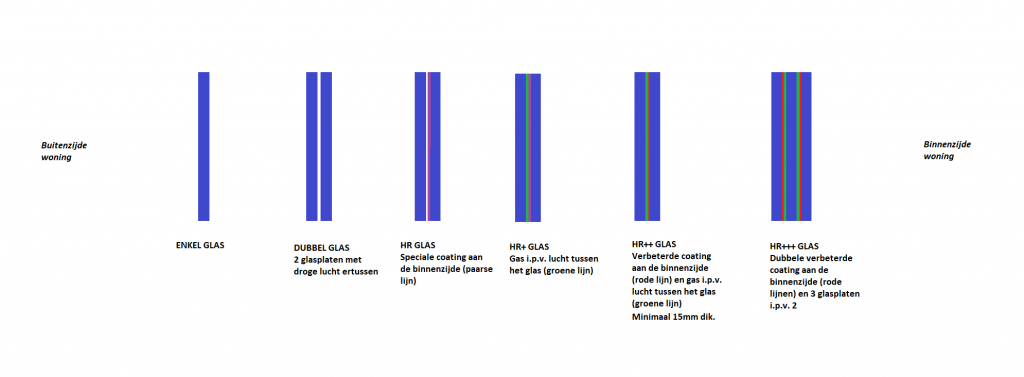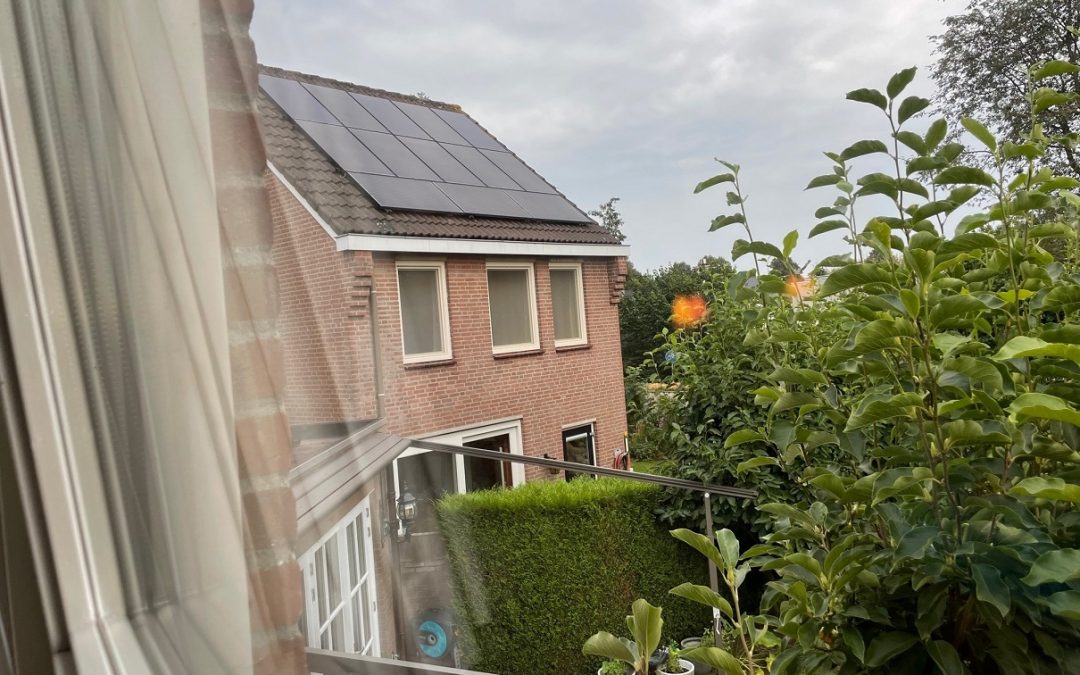Single glass
We start with single glass. This is easy to recognize because this glass consists of 1 sheet of glass.
Double glazing
Double glazing consists of 2 panes of glass and between these panes is a space called a “cavity”. Inside that cavity is air. The air between the glass panes has an insulating effect. You can recognize double glazing by the aluminum strip around the glass. Double glazing has a standard U-value ± 2.9.
HR glass
With HR glass, as with double glazing, there is air between the glass panes. The difference between double glazing and HR glass is that a special coating is applied to the inside of the cavity (=space between the glass plates). This coating allows the sun’s rays to pass through and reflects the long-wave radiation, making it more insulating. You can try to figure out if something is HR glass by looking on the inside of the glass to see if you see a product description there that says “HR glass”. HR glass has a standard U-value ± 1.9.
HR+ glass
The difference between HR+ glass and HR glass is that HR+ glass has a gas in the cavity (between the 2 sheets of glass). You can try to figure out if something is HR+ glass by looking on the inside of the glass to see if you see a product description there that says “HR+ glass”. HR+ glass has a standard U-value ± 1.6.
HR++ glass
With HR++ glass, there are 2 somewhat thicker glass plates with a noble gas between them. The difference with HR+ glass is that there is an improved coating on the inside of the cavity and the glass is usually thicker (minimum 15mm). How to recognize HR++ glass you can read in this blog. HR++ glass has a standard U-value ± 1.2.
HR++ glass (Triple glazing)
Triple glazing can be recognized by the fact that there are not 1 but 2 aluminum strips in the cavity of the glass.
There are 3 layers of glass here with a noble gas in between the layers of glass and a coating. How to recognize triple glass you can read in this blog. HR++ glass has a standard U-value ± 0.9.
We’ve drawn everything out for you simply in this visual representation of the different types of glass in the house (note: opens in new window):


